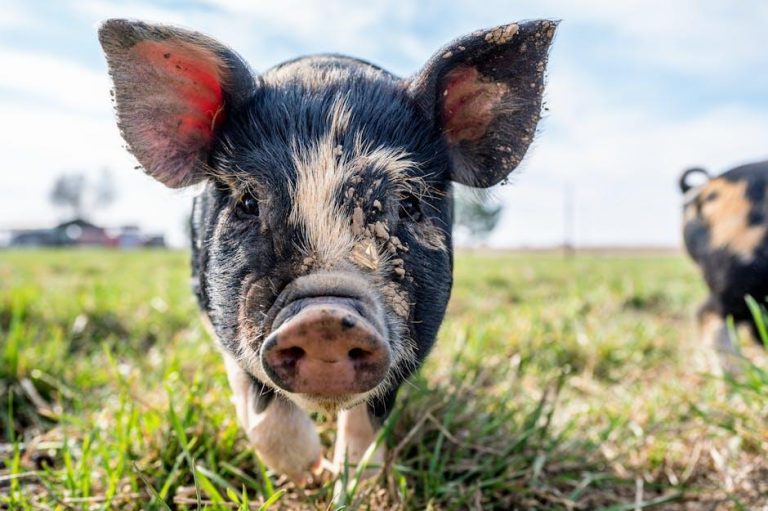
Humanlike “Teeth” Have Been Grown in Mini Pigs – MIT Technology Review
Dental science has taken a giant leap forward thanks to a groundbreaking discovery highlighted by MIT Technology Review: humanlike teeth have successfully been grown in mini pigs. This remarkable breakthrough not only showcases the power of regenerative medicine but also opens new possibilities for treating dental diseases and deficiencies in humans.
Introduction: A New Frontier in Tooth Regeneration
Imagine a future where missing or damaged teeth can be replaced naturally by growing new ones that function and look just like the originals. Recent research has made this a real possibility. Scientists have cultivated humanlike teeth structures in mini pigs using innovative bioengineering techniques that mimic tooth development processes. Published by MIT Technology Review, this milestone in regenerative dentistry combines stem cell research, tissue engineering, and animal modeling to pave the way toward next-generation dental therapies.
The Science Behind Growing Humanlike Teeth in Mini Pigs
The process of growing humanlike teeth in mini pigs leverages advanced bioengineering and stem cell implantation. The mini pig, due to its similarity to human dental anatomy and oral environment, serves as an ideal model for this kind of research.
Key Steps Involved:
- Stem Cell Harvesting: Scientists obtain dental stem cells capable of differentiating into various tooth components.
- 3D Scaffold Development: A bio-compatible scaffold mimics the tooth’s natural structure and provides a framework for growth.
- Implantation into Mini Pigs: The scaffold coupled with stem cells is implanted into the jaw of mini pigs, where natural growth is stimulated.
- Natural Integration: Over time, the cells form enamel, dentin, pulp, and other crucial tooth components that integrate with the surrounding tissues.
Why Mini Pigs? The Perfect Model for Human Teeth Research
Mini pigs are often used in biomedical research due to their physiological and anatomical similarities to humans. When it comes to dental studies, their teeth size, shape, and jaw structure make them incomparable to other animal models.
- Pigs’ dental composition closely resembles human teeth in terms of enamel hardness and dentin density.
- The oral microbiome of mini pigs is similar enough to humans to provide relevant biological interaction results.
- Mini pigs accept dental implants and regenerative treatments in ways that predict outcomes for human patients.
Potential Benefits of Humanlike Teeth Growing in Mini Pigs
This research represents more than just a scientific curiosity; it has profound implications for dental health and regenerative medicine:
- Natural Tooth Replacement: Instead of artificial implants or dentures, patients could receive biologically grown teeth that regenerate naturally.
- Improved Oral Health: Humanlike teeth reduce risks of gum disease and rejection that are common with synthetic implants.
- Cost-Effective Treatments: Over time, dental restoration through tissue engineering may be more affordable than multiple prosthetic procedures.
- Enhanced Functionality and Longevity: Bioengineered teeth adapt better to oral conditions, ensuring longer-lasting solutions compared to conventional implants.
Case Study: Overview of Recent Research Highlights (2024)
| Research Aspect | Details |
|---|---|
| Animal Model | Mini pigs (Sus scrofa domesticus) |
| Stem Cell Source | Human dental pulp stem cells |
| Scaffold Material | Biodegradable 3D hydroxyapatite matrix |
| Growth Period | 3–6 months |
| Resulting Tooth Structure | Functional enamel, dentin, pulp, and root formation |
Practical Tips and Future Directions for Regenerative Dental Medicine
While this breakthrough is still in its research phase, dental professionals and patients should be aware of the potential directions this field might take:
- Stay Updated: Follow leading dental research publications and MIT Technology Review for updates on clinical trials and technology advancements.
- Explore Stem Cell Dentistry: Clinics may soon incorporate stem cell therapies as adjunct treatments, even before full tooth regeneration becomes widely available.
- Maintain Dental Health: Preventative care remains critical; the goal is to minimize the need for such advanced interventions where possible.
- Advocate for Research Funding: Supporting regenerative medicine research shifts the pace of innovation.
What This Means for You: The Future of Teeth Replacement
This study is a cornerstone in the rapidly emerging field of regenerative dentistry. For patients, it could mean:
- No more uncomfortable dentures or invasive metal implants.
- Biocompatible teeth grown from your own cells or compatible stem cells.
- Faster, more natural recovery times after tooth loss or damage.
While widespread human applications may take years to become routine, the horizon for dental treatment is optimistic and exciting.
Conclusion: A Promising Leap Toward Natural Tooth Regeneration
The successful growth of humanlike teeth in mini pigs, as featured by MIT Technology Review, marks an extraordinary advancement in dental biotechnology. By harnessing the power of stem cells and bioengineered scaffolds, researchers have brought us closer to achieving natural, fully functional tooth regeneration.
Whether for patients suffering from tooth loss or those seeking cutting-edge dental care, this innovative development signals a future where regrowing teeth isn’t just science fiction but a practical, accessible reality. As research continues, the mini pig model will remain an invaluable asset in bridging the gap from laboratory discovery to clinical dental solutions designed to improve lives worldwide.


